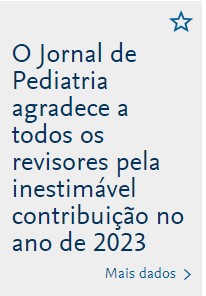Asthma is one of the most common chronic conditions during childhood. The origin of asthma is not fully understood, but it is clear that it is a complex disease in which genetic mechanisms and environmental factors are involved. In this issue of Jornal de Pediatria, Brandão et al. analyzed the relationship between acute viral bronchiolitis during the first year of life and asthma at school age in a cohort of 672 children in northeastern Brazil.1 Acute viral bronchiolitis was defined according to the American Academy of Pediatrics (AAP) guidelines, basically requiring a combination of upper and lower respiratory symptoms in the first year of life. Even after adjusting for potential confounders, including family atopy or cigarette smoke exposure, bronchiolitis during the first year of life was independently associated with asthma at school age. Why is this study important? It hints to the possibility that we may be able to prevent asthma by preventing viral infection during early childhood. This possibility depends on the causal relationship between bronchiolitis and subsequent asthma. For rhinovirus bronchiolitis, the link is strong, but epidemiological studies suggest rhinovirus bronchiolitis “reveals” asthma rather than causing it.2,3 For respiratory syncytial virus (RSV), the link is less strong, but the association might well be causal. RSV infection causes a robust neutrophilic airway inflammation, which may cause persistent changes to the airways,4,5 resulting in chronic airway disease without causing allergic sensitization. In line with this hypothesis, a previous birth cohort study by Renato Stein demonstrated that RSV does not add to the risk of allergic sensitization.6 Causality was suggested by a complex longitudinal study by Wu et al. showing that the time gap between time of birth and the peak of the RSV season determines the risk of asthma at school age.7 The most convincing evidence is supposed to come from RSV prevention trials. For RSV infection, most trials have indicated that RSV prevention decreases the risk of subsequent wheeze,8–10 although this could not be confirmed in a recent trial.11 The results of these trials should be considered with caution, as all of them where performed in special populations, leaving the possibility that the direction or the size of the long-term effect of RSV on asthma is different in the normal population. Maternal or infant vaccination against influenza is one of the potential interventions to be considered. More important, probably, are the currently developed RSV vaccines.12 Several companies have now entered the clinical development stage of their RSV vaccines. A nanoparticle-based vaccine for maternal vaccination has already entered phase III. This vaccine is being developed with the support of the Bill and Melinda Gates Foundation and is intended to be affordable, therefore it would be available in high as well as low- and middle-income countries. The clinical RSV vaccine programs of other large companies follow rapidly, so it appears to a matter of time before we have an RSV vaccine. These upcoming RSV prevention trials in the normal population will address the causal link between RSV and asthma, and show the potential for primary asthma prevention. The clinical development of all RSV vaccines is supported by studies such as that by Brandão et al., which show that prevention of acute viral bronchiolitis not only decreases the risk of a life-threatening acute disease, but may also impact on the child's lung health throughout childhood and thereafter.
Conflicts of interestUMCU has received funding for investigator-initiated studies by Louis Bont from AbbVie, MedImmune, Janssen, and MeMed Diagnostics. He has also received for consultations or invited lectures for AbbVie, Ablynx, MabXience, Novavax, and Janssen.









